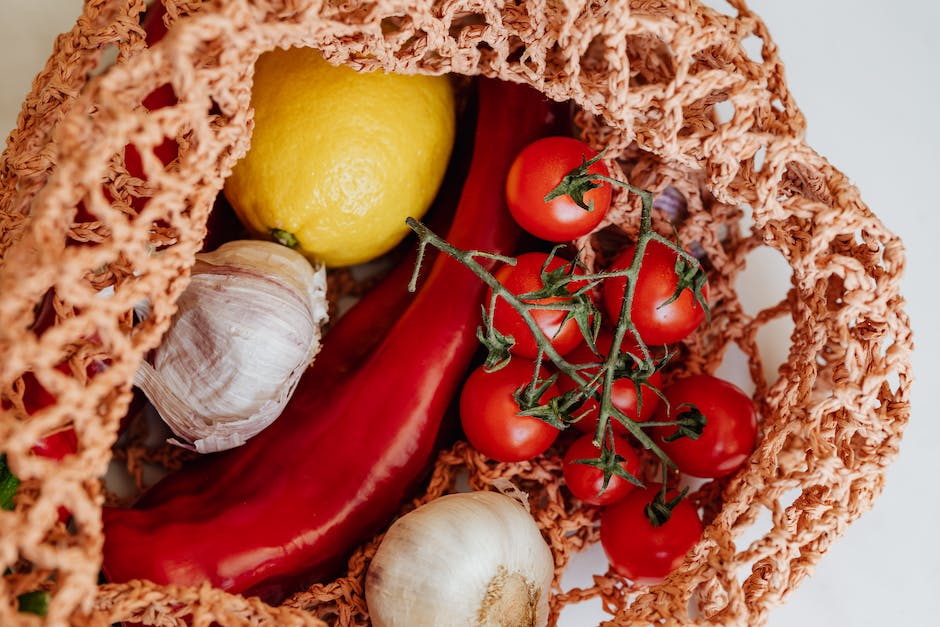Mastering the Art of Cooking on a Budget
Cooking on a budget doesn’t signify compromising on the quality or flavor of your meals. It’s a thoughtful process learning how to effectively allocate resources, prioritize key nutritional elements, and use affordable ingredients in diverse and delightful ways.
Understanding how to manage a food budget is not only an essential life skill, but also an empowering experience that can lead to greater nutritional awareness and dietary control.
Through precise meal planning and prepping, not only can you save money, but also lessen waste by using every ingredient resourcefully. By discovering affordable recipes and learning to adapt to the ingredients available, a culinary world of cost-effective yet gastronomically satisfying dishes await your discovery.
Understanding and creating a food budget

Understanding Your Dietary Needs and Lifestyle Preferences
First, determine your food lifestyle choices and your dietary needs. Both needs and personal preferences transform into financial realities on your food budget. If you are vegetarian or vegan, for instance, this could affect your budget differently than if you consume a lot of proteins. Do you like cooking elaborate meals, or do you prefer quick and simple recipes? Consider the time and ingredients each meal requires. If you have dietary restrictions or specific nutritional needs, your budget should align with supporting them.
Analyzing Current Food Expenditure
Observe and analyze your current spending when it comes to food. Use a month or a few weeks as your model time frame. Log every meal purchase, including eating out and small snacks. By tracking the actual amount you spend on groceries and food, you can start to understand where and how you splurge, and what changes you might need to make to stay within a reasonable budget.
Setting Up A Realistic Food Budget
Once you’ve assessed your needs and current spending, establish a realistic food budget. Start by setting a baseline budget based on recent spending. Avoid simply choosing the lowest amount possible; it’s better to be realistic with your expectations as unrealistically low budgets can result in failure and frustration. Divide your budget into categories (like produce, meats, dairy, etc.) to establish control over each sector.
Prioritizing Nutrient-Dense Foods
One budgeting strategy is to prioritize nutrient-dense foods. These foods provide a lot of nutrients but aren’t necessarily expensive. Lean proteins, whole grains, fresh fruits, and vegetables are typically better for you and may also be cheaper than processed foods. These can be a good foundation for your meals, with more expensive items used sparingly to add flavor and variety.
Planning Meals Around Sales and Seasonal Foods
Another strategy is to plan meals around what’s on sale or in season. Weekly sales ads can help you decide what meals to make, and buying produce in season is usually cheaper (and tastier) than buying out of season. You might also try batch cooking with these ingredients and freezing meals to eat later.
Maximizing Each Dollar Spent
Ways to maximize each dollar spent include buying items in bulk, purchasing generic brands, and avoiding pre-cut fruits and vegetables. Items in bulk are typically cheaper in the long run and can be portioned and stored for later use. Choosing less expensive cuts of meat can also lead to savings.
Remember, the goal is not to adjust your lifestyle dramatically but to make smarter choices that will lead to cost savings without compromising your dietary needs and preferences. Achieving a balanced and budget-friendly food lifestyle is a process, so remain patient and consistent in your approach.
Meal planning and prepping

Meal Planning for Budget Cooking
Meal planning is an effective way to save money, time, and reduce waste. Start by deciding what meals you want to make for the week. Look up recipes online or in cookbooks, and try to choose ones that share ingredients to maximize their use and limit waste. Once you have a list of meals, write down all the ingredients you need.
Next, take an inventory of what food you already have at home, checking your pantry, fridge, and freezer. Cross off any items from your shopping list that you already have. This process can also inspire meal ideas based on what you have.
When making meal plans, keep in mind special dietary considerations as well as leftovers – a true budget saver. Consider making larger meals that offer multiple servings, which you can then pack for lunch or have as a meal another day.
Invest in Inexpensive, Long-Lasting Ingredients
Another key to effective budget cooking is to rely on low-cost, yet nutritious and long-lasting ingredients. These include items like rice, pasta, lentils, canned goods, and frozen fruits and vegetables.
Beans, for example, are an inexpensive source of protein that can be used in a variety of meals. They also have a long shelf life, especially when purchased dry and stored properly. Rice and pasta are also budget-friendly options that can be paired with a wide array of other ingredients.
Other long-lasting, budget-friendly ingredients include eggs, canned tuna, and frozen vegetables. These are versatile ingredients that can be used in a variety of dishes from omelets to pasta sauces to stir-fries.
Meal Prepping to Save Money
Meal prepping can also help save money by allowing you to buy in bulk and utilize your ingredients fully. Start by choosing a day of the week for meal prepping, such as Sunday. Prepare all of your meals for the week on this day.
When meal prepping, make large batches of meals that freeze well, like soups, stews, or casseroles. These meals can be portioned out into single servings and frozen for later use. This not only saves time on busy days but also helps to avoid impulsive takeout orders.
Another meal prepping strategy is to prepare ingredients rather than whole meals. For example, you could cook a large batch of rice, roast several servings of vegetables, and grill or bake multiple servings of protein like chicken or tofu. Then, these ingredients can be mixed and matched throughout the week for various meals, adding variety to your diet.
Remember to store your prepped meals properly. Use airtight containers to keep meals fresh in the fridge, and make sure any meals you’re freezing are adequately sealed to prevent freezer burn. Lastly, label your containers with both the date and the contents to keep track of what’s in your fridge or freezer and when it needs to be eaten by. This will ensure you utilize all of your meals and limit waste.
Meal planning and prepping are highly effective ways to cook on a budget. By planning meals, investing in inexpensive, long-lasting ingredients, and preparing meals in bulk, you can save money and limit waste while still enjoying a variety of delicious, nutritious meals.
Finding and using affordable recipes

Find Affordable Recipes
One of the primary steps in cooking on a budget is finding affordable recipes. There are countless sources to find these recipes, such as budget-focused cooking blogs, affordable cooking book series, or mobile apps dedicated to cheap eats. The Food Network’s budget section, “Budget Bytes”, and “Cook Smarts” are recommended resources.
When selecting a budget-friendly recipe, take note of the total cost, portion size, and whether the ingredients are versatile, meaning they can be used in other meals too. Opt for meals that can be used for multiple servings, such as stews, casseroles, and stir-fries.
Understand Recipe Modification
Understanding how to modify a recipe based on the ingredients you already have at home is a crucial aspect of budget cooking. It maximizes use of available resources and minimizes waste, especially when producing leftover ingredients that are non-versatile.
Start by familiarizing yourself with common food substitutions. For example, vinegar can replace lemon in many recipes, as both have a sour flavor profile. Also, vegetable oil is a good substitute for butter in baking recipes.
Meal Planning and Shopping
Plan your meals around weekly grocery store sales or discounts, and always have a shopping list to avoid impulsive buys. Canned, frozen, and bulk items are usually more affordable and have a long shelf life. When planning, ingredient crossover (using one ingredient in multiple dishes) is helpful. For example, shredded chicken can be used in a salad, soup, or incorporated into a pasta dish.
Affordable Cooking Techniques
Understanding and applying different cooking techniques can broaden the potential for creating diverse and exciting meals from affordable ingredients. For example, roasting brings out the natural sweetness in vegetables, while slow-cooking can turn inexpensive and tougher cuts of meat into tender and flavorful dishes.
Try stir-frying for quick and easy meals. It uses less oil, retains the nutritional value of the vegetables, and you can use almost any ingredients. Making use of inexpensive seasonings, such as dried herbs, spices, and sauces, can add depth of flavor to otherwise simple meals.
Leftovers and Storage
Always consider the potential for leftovers. They can serve as another meal, reducing the cost further. Last night’s carrot sides can become today’s salad fixture, whereas remnants of chicken can become sandwich fillings. Proper storage methods would also ensure the longevity of the prepared food, leading to less waste.
One of the best ways to save on food is to reduce waste. Always freeze leftovers if you’re not going to eat them within a few days. You can also freeze fresh fruits and vegetables that are about to go bad and use them later in a smoothie or soup.
By planning, finding affordable recipes, and making good use of leftovers, you can stretch your food budget further and reduce waste while still enjoying a variety of tasty meals.

Establishing a functional food budget coupled with effective meal planning can be instrumental in ensuring dietary needs are met, without feeling a strain on your wallet. This process is not just about skimping on dining expenses, but establishing a program of healthy, affordable, and delectable meals that cater to a variety of palates.
Familiarizing oneself with affordable recipes, and learning to creatively modify them as per availability, can open up a world of diverse meals crafted from economical ingredients. In essence, cooking on a budget is about striking an economical balance between nutritional needs, culinary desires and monetary constraints, turning a seeming challenge into a delightful exploration of savory possibilities.
Elevate your website with Writio, the ultimate AI content writer. This captivating article was elegantly crafted by Writio.

